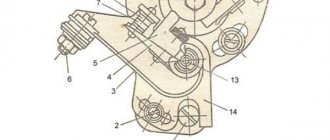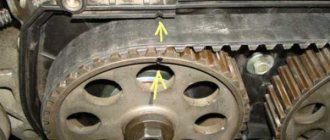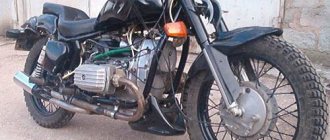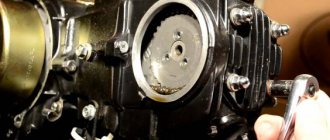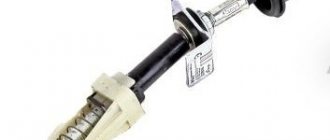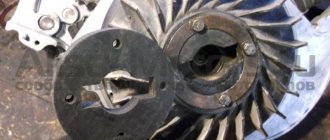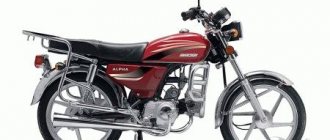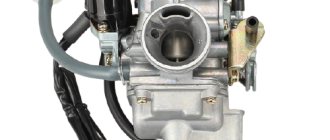You need to understand that any vehicle will be operational only if all its mechanisms work correctly and efficiently. The ignition system is a fairly important component of a car. Owners of domestic cars often encounter a problem associated with its response being delayed or delayed. This problem may cause other problems. Therefore, it is worth considering how to correct early or late ignition and why such anomalies appear in the first place.
How to set the ignition timing with your own hands
Setting the ignition correctly means that you need to find the desired ignition timing (IAF). The tuning is done at idle, although this is understandable, but suddenly someone decided to put the car on a jack and tune it at speed.
To adjust the ignition, you need to know that the optimal good engine crankshaft speed at idle is from 850 to 900 rpm. The ignition timing angle should be between -1 and +1 degrees. This is a degree relative to top dead center (TDC).
A popular device used to set the ignition is a strobe light. With a strobe, the settings are more precise. But, if it is not there, then set it up using a control light.
If a light bulb is used for adjustment, it is connected to the positive terminal on the ignition distributor (distributor), and the light bulb base is connected to ground. Let's look at the configuration options separately.
Now we have begun to disassemble the power units of automobiles. Please write in the comments what kind of car you have and with what engine. Later, materials on such engines will be published with useful information, for example, if the timing belt breaks, whether the valves are bent, also technical characteristics, design, on which cars such engines are installed, etc. We have already reviewed the ZC engines from the Honda plant, 3UZ-FE, 3S-FE, 1AZ-FE.
Strobe setting
- Start the engine, heat it to operating temperature and turn it off.
- Connect the strobe light to the car's network.
- Unscrew the nut securing the distributor cap - ignition breaker.
- Place the alarm sensor on the high-voltage wire of the first cylinder.
- If there is a vacuum corrector hose on the distributor, then it must be disconnected and plugged.
- Direct the strobe light onto the engine crankshaft pulley.
- Now start the engine and leave it idling.
- Now you need to turn the distributor body and fix it so that the mark on the crankshaft pulley coincides with the mark on the timing mechanism.
- If the marks match, tighten the nut.
How to set the ignition with a control light
- Rotate the engine crankshaft until the mark on its pulley coincides with the timing mark.
- In this case, the ignition distributor slider should be directed to the first cylinder.
- Now you need to loosen the distributor nut.
- One wire is connected to the core of the warning lamp (control) and to the ignition coil wire (bobbin).
- The second wire connects the ground and the light bulb base. The light should light up.
- After this, you need to turn on the ignition by turning the ignition key and turning the distributor body clockwise. When the distributor rotates, the light will go out in some position. In this position, tighten the distributor clamping nut.
How to adjust the torque of the classic and “nine”
Let's now look at how adjustments are made in carburetor classics, for example, in the VAZ 2107. We will need:
- wrenches;
- light bulb with wires.
Begin.
- First of all, turn off the engine.
- We unscrew the spark plugs and carefully close the vacated holes in the cylinders with rag swabs.
- Set the piston of the first cylinder to top dead center. To do this, use the “38” key to turn the crankshaft in a clockwise direction until the mark of the crankshaft pulley aligns with the mark on the engine block. In this case, the tampon should fall out of the hole in the first cylinder. However, a block usually has three marks. The first means an advance of 10 degrees, the second - 5, the third - 0. We need the second.
- Screw in the candles.
- Loosen the nut securing the distributor.
- We connect one wire of the light bulb to the low-voltage terminal of the coil, and the second to ground.
- We get behind the wheel and turn the key to turn on the power.
- Let's return to the distributor. Rotate it very slowly clockwise until the light comes on and then goes out. Returning the distributor back, counterclockwise, we wait until the lamp lights up again, and the contacts separate. This is the right moment.
- Tighten the distributor fastening. The ignition adjustment of the rear-wheel drive VAZ is completed.
However, a front-wheel drive VAZ equipped with a carburetor has exactly the same spark excitation system. Therefore, the ignition adjustment of the VAZ 2109 is carried out according to similar instructions.
Now let’s look at the processes for setting up other systems below.
What to do with other cars
Let's look at how to adjust the ignition on a Buran snowmobile. For this you will need:
- strobe;
- keys, screwdrivers;
- sheet of paper, pencil, protractor, compass.
The actions are as follows.
- On a sheet of paper, draw a circle with a diameter equal to the size of the stationary element of the variator.
- Using a protractor, we mark the degrees around the circle from 0 to 30. Moreover, we put 0 at the top, where the clock shows noon.
- Having unscrewed the spark plugs, insert a screwdriver into the left cylinder.
- By turning the variator with your hand, we catch the moment when the screwdriver shows that the piston has reached top dead center.
- We put a mark on the variator opposite the zero of the scale we made.
- We connect the strobe to the high-voltage wire of the left cylinder, screw in the spark plugs.
- We start the engine, point the strobe light towards the scale. The device lamp should light up when a spark appears, and it should show which scale mark corresponds to the variator mark. This way we find out the existing advance angle.
- To install it, turn off the engine and loosen the magdino mount. Then we turn the magdino, maintaining the desired angle.
This is interesting: We personally repair rotten car sills
The setup is complete. But here you will have to buy a strobe to adjust the ignition angle.
Now let’s look at the adjustment process on the Ural motorcycle. Modern Ural motorcycles are equipped with a contactless system. However, sometimes it also needs adjustment. Let's see how this happens.
Next you need to prepare:
- wrenches, screwdriver;
- light bulb with wires.
- Using the crankshaft mark, set the piston of the first cylinder to top dead center.
- The microprocessor unit, having loosened its fastening, is turned counterclockwise until it stops.
- The flywheel mark must match the motor mark.
- The light bulb should light up, one contact of which is connected to ground, and the second on the microprocessor unit.
- Turn the block further until the light goes out. This is the right moment. Tighten the fastening.
Next, we will study how ignition adjustment is done on the still popular ZIL-130 trucks. For work you will need:
- First, unscrew the spark plug from the first cylinder and insert a paper plug in its place. We turn the crankshaft by hand, when the plug flies out, we align the mark of the crankshaft pulley with the mark of the timing gear block. The piston of the first cylinder should be at top dead center.
- We install the distributor drive in the cylinder block. We align the holes in the lower drive plate with the holes in the cylinder block. Tighten the bolts.
- We turn the crankshaft until the pulley mark is in front of the mark on the block between 3 and 6 combs.
- Using the adjusting screws, set the upper plate of the corrector to the “0” position of the lower plate.
- We turn the breaker by the body until the cam of the moving contact shaft is pressed out. Tighten the breaker fastening.
- We secure the high-voltage wires, start the engine, and check the operation of the system.
The same principle is used to adjust the ignition on the YaMZ 238 truck engine. Although for detailed instructions it is better to refer to the technical data sheet.
The same applies to ignition adjustment for Kamaz modifications. The presence of a high-pressure fuel pump in Kamaz makes it necessary to set the exact angle of injection of diesel fuel into the working cylinder. An inaccuracy of one degree can lead to engine repair.
In general, in all cases, adjusting the correct ignition timing helps engine performance:
- firstly, it makes it easier to start;
- secondly, fuel consumption is optimized.
Settings price
But the car enthusiast is not always confident in his abilities. Sometimes it’s easier to go to a car service center to adjust the correct ignition timing.
We have indicated how much they will charge for this operation in large cities of Russia in the lines of this table.
Car with HBO
The main reason for installing gas equipment is to save on fuel. Practice shows that gas costs are approximately half that of gasoline, which is a compelling argument for many. However, you cannot completely switch to this type of fuel, since the need for gasoline remains for warming up and working at high loads.
HBO cylinder in spare tire
Plus, gas is consumed much faster and has a fairly high octane number, so the fuel-air mixture burns out even at the exhaust stage, which has a negative thermal effect on the exhaust tract.
Adjusting the ignition and combustion of the mixture on cars with LPG is the main task; good tuning allows you to save even more money on fuel.
Ignition adjustment on carburetor engines
Adjusting the ignition by turning the distributor
We recommend: Pros and cons of a contract motor
It is produced by turning the ignition distributor housing (distributor), the shaft of which is driven by transmitting torque from the engine through intermediate gears. On engines of the VAZ 2108 family, the distributor shaft is rotated by direct engagement with the camshaft, but this is not of fundamental importance. The most important thing is the exact coordination of the ignition system with the mechanics of the internal combustion engine.
By rotating the distributor, the desired ignition timing is adjusted. Setting late or early ignition is everyone’s business and depends on the desire to save fuel or driving style.
Regardless of whether the distributor is installed - contact or non-contact (with a Hall sensor), turning its body against the direction of rotation of the rotor increases the ignition timing. That is, to make the ignition “early”, you need to determine in which direction the rotor rotates - you can remove the cover from the distributor and turn the crankshaft. It will be clearly visible where to turn the distributor for early ignition. But the required ignition timing is not always determined by the engine characteristics specified by the factory. Its value is also affected by the octane number of the fuel.
This is very clearly visible when using gas equipment on cars with carburetor engines. When switching from petrol to gas for the first time, the car refuses to accelerate. To achieve normal engine operation, you have to not only turn the ignition on early, but turn the distributor as far as it can go in the opposite direction. And vice versa, when switching back to gasoline, such ignition advance will be unnecessary - the knocking of the piston pins caused by detonation will “tell” this. This is due to the large difference in octane numbers between gas and gasoline. A very simple but effective way to check the accuracy of setting the advance angle is to test the operation of the motor in motion. When you sharply press the gas pedal, a slight short-term knock of the piston pins should appear in the engine gaining speed.
Ignition timing is delayed
Misaligned distributor adjustments can lead to the fact that a discharge on the spark plug electrodes forms too late - when the piston is already at top dead center (TDC) or has begun to move downwards - the working stroke. In this case, the following characteristic signs are observed:
- The crankshaft speed at idle is reduced.
- The power of the power unit drops noticeably, the car accelerates very sluggishly. The reason is the loss of flash energy of fuel burning during the working stroke of the piston.
- A strongly delayed spark causes the engine to shoot into the muffler. Gases rush through the opening exhaust valve.
- It is more difficult to start the engine when cold.
- Fuel consumption is increasing.
Reference. Symptoms of late sparking are more noticeable on vehicles equipped with gas installations. The moment of flash is very important here, since more propane is supplied to the cylinders and if the discharge is delayed, it burns out already in the manifold.
The consequence of late ignition on a diesel engine is difficult starting even on a warm engine and “sneezing” of black smoke from the exhaust pipe. Since fuel injection occurs at the very beginning of the power stroke, diesel fuel does not burn completely and is thrown out in the form of soot. If the fuel supply occurs too late, the power unit will not start at all.
VAZ eight-valve “injector”: ignition marks
The eight-valve engine of the “tens” is distinguished by the simplicity of its design. Its ignition marks are located on the camshaft gear, on the crankshaft pulley, and also on the flywheel crown.
All these elements are rotating, and in order to regulate sparking, they need to be set in a certain order when the pistons of the first and fourth cylinders are at top dead center.
The mark on the camshaft gear in the form of a tide must coincide with the protrusion (bar) on the rear timing cover. The same mark is on the crankshaft pulley. It should be aligned with the marking in the form of a dot on the oil pump cover.
There is also a mark on the flywheel crown. It can be seen if you pull out the rubber cap covering the inspection window on the gearbox housing. When the ignition is set correctly, the mark on the crown must match the same mark on the gearbox.
How to determine early or late ignition of a car engine
The operating principle of any automobile internal combustion engine is based on the use of energy resulting from the dynamic expansion of the ignited fuel mixture. The moment of ignition of the fuel in the cylinder (cylinders) affects the power characteristics of the engine, as well as whether it will start at all. It is the timeliness of the combustion of the fuel mixture and is the essence of the definitions of “early” and “late” ignition. Let's take a closer look at how ignition timing affects the operation of the internal combustion engine, as well as how to determine early or late ignition based on the nature of engine operation.
The stability of the engine, its power, fuel efficiency, etc. directly depend on the correct settings and uninterrupted operation of the ignition system. Normally, on four-stroke engines, the fuel-air mixture should ignite at the end of the compression stroke, that is, just before the piston rises to top dead center. This ignition timing is due to the fact that the mixture requires a certain time to burn, after which the energy of the expanding gases pushes the piston down and the power stroke begins.
We also recommend reading the article on how to set the ignition on a diesel engine. From this article you will learn about ways to adjust the injection advance angle on diesel engines.
Late or early ignition should be understood as a delay or advance in the operation of the ignition system in relation to the position of the piston in the cylinder. In other words, a spark plug spark forms and ignites the fuel-air mixture not at the optimal moment when the piston approaches TDC, but earlier or later than this moment. This phenomenon is called early or late ignition. For this reason, owners of vehicles that have the ability to independently adjust the ignition timing (ignition timing) are often faced with the need to adjust the ignition.
We recommend: How to replace brake discs on a VAZ-2114 yourself
Operating principle of contact ignition
This equipment allows you to get a fairly high voltage spark at the contacts of the spark plugs. The voltage for an automotive system can be up to 30,000 V. In order for a spark to be produced, the spark plug contact is connected to a coil. It is thanks to this that such high voltage is created. Signals are supplied to the coil using a special group of contacts. When the contacts are opened using a special mechanism, a spark is generated.
For the engine to operate efficiently, it is necessary that the moment of spark formation fully corresponds to the position of the piston group in the combustion chambers. To achieve this, a clearly calculated mechanism is used - a distributor, which transfers rotational energy to the breaker.
Among the disadvantages of such a system is the high impact of mechanical wear on the formation process and spark quality. This also significantly affects the quality of the internal combustion engine and requires tuning. That's why it's so important to know how to adjust the ignition.
What should the ignition timing be, adjusting the angle at idle
The ignition timing should be optimal, that is, not too early and not too late. The ignition timing at idle is adjusted as follows (the engine must be warmed up):
- We loosen the nut that secures the distributor body, after which it begins to slowly rotate in different directions.
- In the position in which the engine speed will be maximum, you need to try to “accelerate”. If, when pressing the pedal sharply, there are no shots, pops or interruptions, and the revolutions rapidly accelerate, then the required position has been found.
- From this point, rotate the distributor body one or two degrees clockwise, and then tighten its lock. The last point must be fulfilled so that the ignition is not too “early”, as a result of which excessive resistance to crankshaft rotation is created.
Replacing the starter relay
Another common problem on VAZ 2107s with a carburetor is a malfunction of the starter relay. When you turn the key in the lock, the system makes a click, but the retractor relay does not operate. Replacing the relay is very simple.
First you need to remove the starter from the relay. Unscrew the 2 bolts that secure it. Slide it to the right and take it out, turning it backwards. Unscrew the nuts securing the starter and relay.
Turn it to the side.
Remove the 2 bolts securing the relay to the starter.
Install the new one in reverse order.
If you follow these simple steps, your VAZ 2107, which has a carburetor system, will serve you for many more years.
Source
What is the ignition system?
The ignition system is a set of interconnected complex mechanisms and structures that, when turned on, create electric sparks that ignite the fuel mixture in the cylinder of an internal combustion unit. Domestic cars are often equipped with a classic ignition system consisting of three key elements. We are talking about a lock, a contact part and an anti-theft element. As for the modified models, they are equipped with contactless ignition systems.
Walk-behind tractors
Manufacturers install contactless electronic systems on modern walk-behind tractor models. They consist of a magnetic circuit in the flywheel, a coil, a high-voltage cable and a spark plug. All settings are set at the factory and often do not require adjustment. How to adjust the ignition on a walk-behind tractor with electronic ignition? By analogy with automotive systems.
You can also adjust the gap between the coil and the magneto element. This gap is adjusted using two screws and the displacement of the coil. On modern walk-behind tractors, the gap should be no more than 0.8 mm.
On some models of such agricultural machines, adjustments are not provided at all. For example, in DM type engines the manufacturer did not provide the opportunity to regulate anything. But modern technology provides such an opportunity. How to adjust the ignition on a walk-behind tractor - by changing the gap between the magneto and the coil.
Early or late ignition
Ignition of the mixture in the working chambers of the cylinders too early or too late causes poor performance of the internal combustion engine. The engine may not pull uphill, accelerate slowly, vibrate strongly, etc.
Signs of an incorrectly set ignition:
- the engine starts with difficulty;
- increased fuel consumption;
- the motor cannot develop power;
- in idle mode (idle speed), the internal combustion engine either stalls or over-gasses;
- the engine responds poorly to pressing the gas pedal;
- The internal combustion engine overheats;
- the engine detonates.
You can easily determine that the ignition needs to be adjusted if you hear popping sounds from the muffler and the car “sneezes.” It is recommended not to operate the machine in this mode, but to adjust it immediately. Moreover, one of the signs is detonation, which can destroy valves, pistons and cylinders.
Diesel car
Many symptoms of incorrect operation on gasoline cars are also transferred to diesel. The main difference between these two cars is the method of ignition of the fuel. Ignition of diesel fuel occurs due to close contact of the fuel with compressed, hot air.
Adjustment on a diesel engine
Ignition tuning on diesel cars consists of finding the required advance angle for diesel fuel injection; it must be supplied specifically at the peak compression moment.
If the angle is set incorrectly, the injection will be untimely. This will lead to poor-quality combustion of the mixture, and the engine will not operate properly.
Gasoline engines with fuel injection (injection)
The signs of late ignition on an injector are the same as on a carburetor engine. But in this case, you cannot independently adjust the lead angle. The fact is that the operation of the ignition and fuel injection systems is controlled by an electronic control unit. It supplies control impulses to the systems after processing signals from the camshaft position sensor and crankshaft sensor. Correction of the moment of spark formation is also carried out taking into account the signal from the knock sensor. To determine the exact cause of malfunctions, professional diagnostics are necessary. Let’s assume that testing the DPRV with a multimeter did not reveal a malfunction. But the oscilloscope can show that the signal characteristics coming from the sensor do not meet the standards. You can make earlier ignition on the injector by changing the ECU program, that is, “reflashing” the “brains”.
Consequences of driving with incorrect settings
In addition to deteriorating vehicle performance, ignition too early causes other detrimental consequences:
- Detonation is the worst enemy of the engine. Due to constant impacts on the pistons, the fingers become loose and play forms in the connection. As a result, the connecting rod bushings are broken and the production of cylinders is accelerated.
- Shooting at the carburetor damages the bushings on which the valve axles rotate. The latter do not close tightly, causing the engine to suck in excess fuel at idle.
- The power unit tends to overheat and if the cooling system malfunctions, the cylinder-piston group may fail.
Modern electronically controlled engines are equipped with knock sensors. When the element detects vibration, the control unit automatically adjusts the ignition timing.
Early injection of diesel fuel into a diesel engine is fraught with damage to the high pressure fuel pump (HPF) and injectors. Imagine: a pump pumps fuel in one direction, and it is counteracted by a piston moving towards TDC. It's not hard to guess who will get the hit.
We recommend: Is it possible to flush the cooling system with Coca-Cola or citric acid?
Signs of late ignition are no less dangerous. Ignition of the fuel mixture at the expansion stage leads to a decrease in engine efficiency and an increase in the load on the main parts - pistons with rings, cylinders and connecting rods. The result is easy to predict - intense heating and accelerated wear.
Shooting into the exhaust tract, caused by delayed sparking, destroys the walls of the exhaust pipe and the muffler partitions. Elements will have to be repaired by welding, or even replaced.
Other methods of setting up and checking the ignition on a car
You can also set the ignition to spark or independently select the angle when the engine will operate most stably and smoothly. The simplest and least accurate method is to install based on the operation of the motor. To set up, start the engine, after which the nut securing the distributor housing is loosened. Next, you will need to turn the distributor housing clockwise and counterclockwise, finding the position at which the engine runs smoothly and the XX speed is the highest. After this, you should turn the breaker body a couple of degrees clockwise and tighten the distributor nut.
When setting the spark ignition, you should align the marks on the crankshaft and timing pulley, and the mark on the slider should point to the wire of the first cylinder. Then the distributor housing nut is loosened, after which the central high-voltage wire should be removed from the distributor cover.
Then the wire contact should be placed near ground (distance about 5 mm) and turn on the ignition. After this, the breaker body should be rotated 20 degrees clockwise. Now the housing needs to be rotated back until a spark appears between the ground and the wire contact. In this position, the distributor body must be secured with the breaker fastening nut.
Upon completion, it is necessary to check the correctness of the OZ in motion. With a warm engine, the car should be accelerated to 40-45 km/h, after which fourth gear is engaged and the gas pedal is fully pressed. Next, it is necessary to assess the degree of detonation. It is considered normal when, immediately after engaging 4th gear, detonation is briefly present (2-3 seconds), but disappears as the car accelerates. If detonation continues after acceleration, then the likelihood of pre-ignition is high. If there is no detonation when the 4th gear is engaged, then the ignition is delayed. In such cases, the SOP adjustment should be repeated to obtain an optimal result.
One of the main differences between a diesel engine and a gasoline engine is the principle of ignition of diesel fuel. Ignition of the fuel-air mixture in a diesel engine is realized through self-ignition of diesel fuel from contact with pre-compressed and heated air in the cylinders as a result of such compression.
Setting the ignition on a diesel engine involves changing the advance angle of fuel injection, which is supplied at a clearly defined moment at the end of the compression stroke. If the angle is set differently from the optimal parameters, then the fuel injection will be untimely. The result will be incomplete combustion of the mixture in the cylinders, which causes a destructive imbalance in engine operation.
It should be remembered that even minor deviations when setting the fuel injection angle can lead to serious damage to the diesel engine.
It turns out that the ignition system of a diesel engine should be understood as the most important element of the power supply system of the power unit - the high-pressure fuel pump (HPF). In most diesel engines, it is this device, in combination with diesel injectors, that is responsible for the timely, dosed supply of diesel fuel to the engine cylinders.
We also recommend reading the article on how to clean and adjust diesel engine injectors yourself. In this article you will learn about the basic methods for cleaning and adjusting injectors.
Injection pump size P
The in-line injection pump of size (type) P has also been developed to provide high peak injection pressure. Like the MW type injection pump, it is a closed type pump and is attached to the engine using a base or flange. In the case of type P injection pumps designed for a peak injection pressure of 850 bar, the sleeve (2) is inserted into a flanged bushing, which is already threaded for the injection valve holder (1). With this version of the sleeve installation, the sealing force does not put a load on the pump housing. Adjustment of the preliminary stroke is carried out in the same way as for an MW fuel injection pump.
In-line injection pumps, designed for low injection pressure, use conventional filling of the fuel line. In this case, the fuel passes through the fuel lines of the individual liners one after another and in the direction of the longitudinal axis of the injection pump. Fuel enters the line and exits through the fuel return system.
Taking as an example the P8000 version of the P injection pump, which is designed for injection pressures up to 1150 bar (injection pump side), this filling method can lead to an excessive difference in fuel temperature (up to 40°C) inside the injection pump between the first and last liner. Since the energy density of the fuel decreases as its temperature increases and, as a result, its volume increases, this will lead to the injection of different amounts of energy into the combustion chambers of the engine. In this regard, such fuel injection pumps use transverse filling, i.e. a method in which the fuel lines of individual cartridges are separated from each other using throttling holes. This means that they can be filled parallel to each other (at right angles to the longitudinal axis of the injection pump under almost identical temperature conditions).
This injection pump is also connected to the engine lubrication system for lubrication. The P-type injection pump is also available in versions with a number of liners (cylinders) of up to 12 and is suitable for operation on both diesel and other fuels.
To prevent malfunctions in the engine of your favorite vehicle, you need to understand whether ignition is delayed or advanced. To help diagnose and make the correct diagnosis, you should go through these points of the inspection plan:
- How difficult is it to start a car?
- How much has fuel consumption increased recently?
- The motor began to work weaker. The reason is loss of pickup.
- The ignition timing at idle causes unpredictable service.
- When you press the gas pedal with your foot, the previous responsiveness is lost, it seems that there are some obstacles in pressing.
- You hear unpleasant sounds under the hood while driving, which is one of the signs of detonation.
- When the wrong ignition angle is set, this will lead to the appearance of characteristic sounds from the carburetor and exhaust system, if this problem is not solved, it will lead to serious damage, remember that regular detonation will aggravate the problems!
Signs of early ignition
To diagnose, you should go through the following points:
- The internal combustion heart emits an unpleasant metallic crackling sound, as if some steel parts were hitting each other.
- The revolutions do not perform their function correctly and float.
- When the gas is applied suddenly, the heart of the car cannot cope with the supply of a large amount of fuel.
Late ignition signs
Now consider the opposite example, where the chemical is ignited much later by the piston, which is already at the bottom. And the fuel burns out when the part returns up. Signs of this problem:
- The internal combustion heart does not accelerate. Pressure on the pedal is slow or does not respond to pressure at all.
- Fuel is consumed faster than during normal operation and the beginning of its service life.
- You can notice carbon deposits on the walls of the cylindrical tank, which complicates the normal operation of the car, and there is a possibility that this will lead to detonation.
- The internal combustion engine overheats due to unstable combustion of the fuel-air substance.
Early ignition on diesel
Symptoms characteristic of cars running on petroleum products are similar to early ignition on a diesel engine. But the causes of the malfunction should be looked for in completely different places. The main difference between a diesel engine and a gasoline engine is how the fuel is ignited. In the first, this is due to the ignition of diesel fuel, which reacts with excessively superheated O2. In the second, the difference lies in setting the correct advance angle for supplying the fuel mixture; with proper service, it is supplied during the compression period. If you set the angle to the wrong degree value, the injection will not be given at the right time, which leads to incorrect combustion of the energy-producing substance and disruption of the engine’s function. Early ignition on a diesel engine depends on how well the injectors and fuel pump supply fuel to the fuel tank in a timely manner.
Signs of late ignition on a diesel engine
Although diesel models differ from gasoline ones, the symptoms of the disease are similar. The difference is that with late ignition on diesel engines, starting is difficult even with the engine prudently heated. An unpleasant symptom will be the periodic appearance of tar smoke from the exhaust system. Since fuel injection begins at the start, the kerosene does not have time to burn and finds its way out through the exhaust pipe in the form of black tar. If the car starts too late, it won't start at all!
How to set the ignition on a diesel video
Pro tip on how to check the quality of ignition timing settings
To check whether the ignition timing is set correctly, you must be guided by the following signs:
- In the operation of a warmed-up power unit, no “dips” should be felt at idle.
- A short detonation (about 3-5 seconds) should be present if you press the gas pedal with a sharp movement, the movement should occur on the most even section of the road surface in fourth gear and a speed of approximately 50 kilometers per hour. That is, the sound of fingers should be heard. If this does not happen, it means the ignition is too late. If this phenomenon is observed, but does not go away, then the ignition is too early.
What are tags and why are they needed?
For the convenience of adjusting the gas distribution phases, each car engine has corresponding ignition marks. They are applied to the drive elements of the gas distribution mechanism.
Installing the ignition according to the marks consists of aligning them correctly. You may ask why is this necessary? The essence of combining the marks is to correctly set the valve timing. If this is not done, the camshaft and crankshaft will rotate asynchronously, which will lead not only to failures in the process of ignition of the mixture, but also to the destruction of the engine itself.

